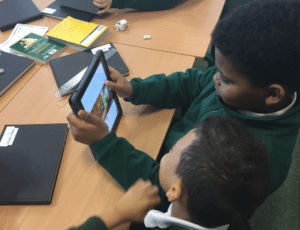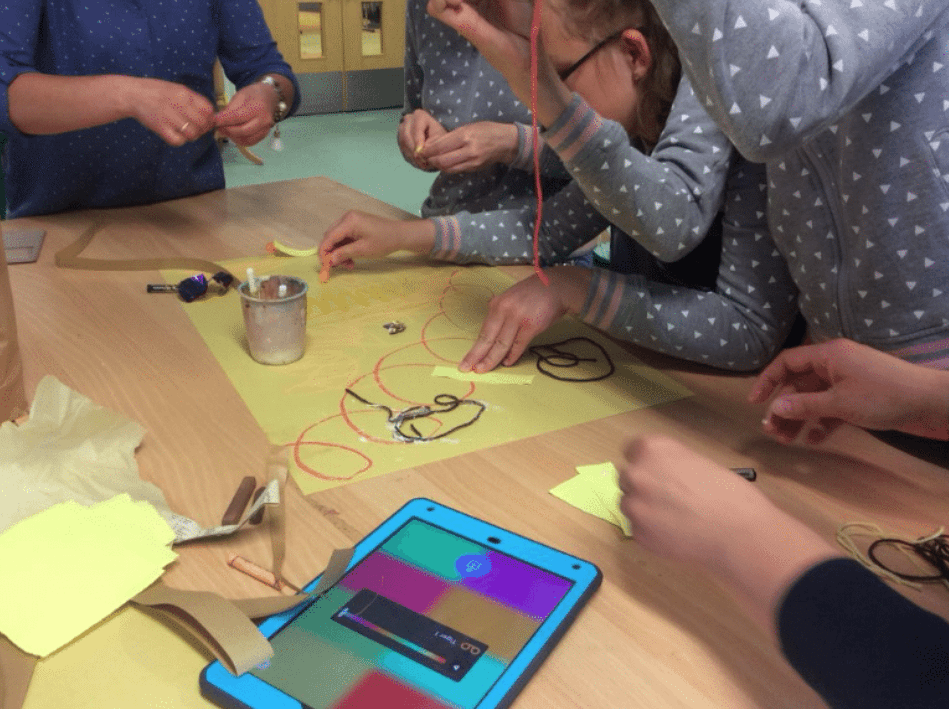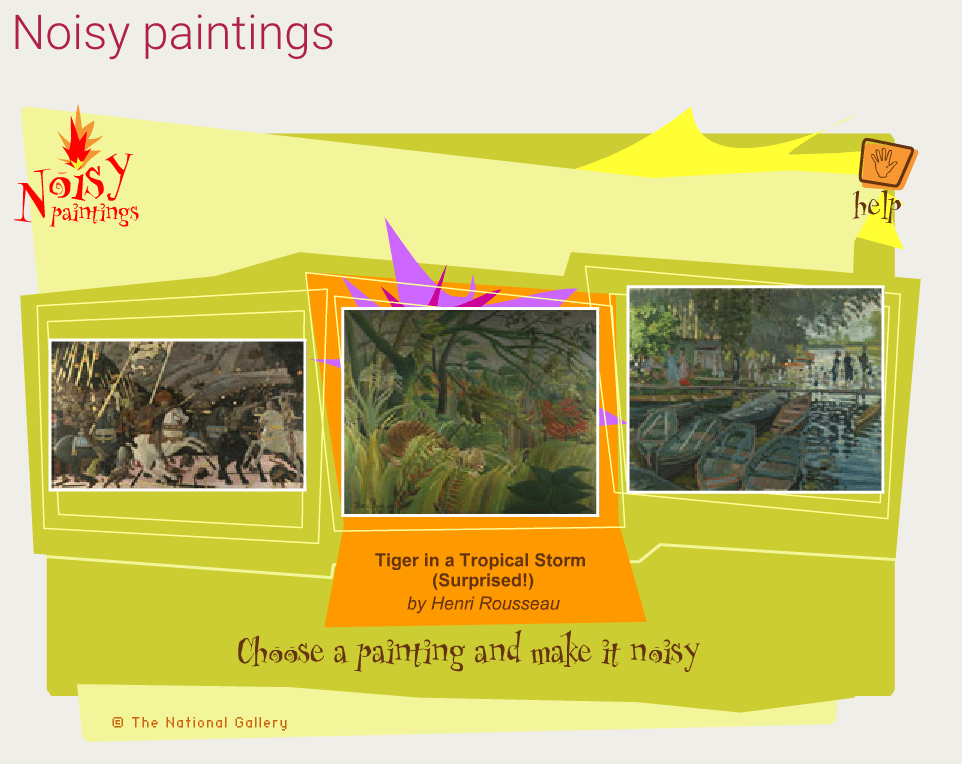Welcome to Unit 3 Hearing STEAM: What if one of our senses changed?
The next two examples review some key resources from the Hearing STEAM team on the theme of images, sound, and visual impairment, which we hope will give you inspiration to plan a relevant lesson with your own learners.
After you have reviewed these materials click on Mark Complete at the bottom of this page to continue.
Case study and lesson plan
Idea to Explore
How can we hear a picture?
Introductory video
Methodology
The sections below – Discover, Define, Develop and Deliver – align to the design thinking model:

Discover
We first began by talking about the different senses and why they are important. Following this, we gave the pupils the opportunity to discuss why their senses are important to them.
We made the pupils aware of the fact that some people are not lucky enough to have the use of all their senses and hence develop ways to compensate for this through their other senses.
Define
Afterwards, we chose a picture for the pupils to ‘hear’. We handed out a sketchbook or a piece of paper and ‘read’ the picture to the pupils. Once completed, the pupils were asked to share their images with a partner and finally, we showed them the original image. This prompted a discussion about the difficulties the pupils faced.
An idea would be to enable the pupils to repeat the exercise in pairs.
Next, we posed the following question to the pupils, ‘How can we hear a picture?’
An extension at this point would be to explore the interactive ‘noisy paintings’ on the National Gallery website.
Develop
The pupils were asked to consider their ideas and refer back to the way that the pictures were described aloud in the earlier part of the lesson. What could they develop to solve the problem?
The pupils used a range of apps to solve the problem. For example, the apps Thinglink and Adobe Spark were used to describe pictures. YouTube and websites such as https://freesound.org/ were used to find sounds.



The pupils may come up with alternative ideas to solve the problem.

Deliver
The pupils can share their solutions with others and see if they can imagine the pictures through the media.
International Collaboration
Sharing the end product between countries is fun and can help to develop language and literacy.
The creation of ‘soundart’ lends itself to any ability or age group and can be shared independently of language. In the example Thinglink below, children with special educational needs from four European countries compose and swap sounds inspired by paintings and then respond to each other’s compositions by creating their own art. Click on the hotspots on the image to hear their sounds:

You can read more about this soundart project here: https://dlaberasmus.com/primary-school-children-use-campus-noise-to-create-a-masterpiece
Reflections and Questions
How successful was the picture that was drawn? Can technology help to develop our senses?
Resources Needed
Pencil, paper, pictures, iPads/laptops, a selection of apps.
STEM to STEAM analysis
Science: How do we use our senses? Which is the most important sense?
Technology: How could we use technology to allow a blind person to ‘see’ a picture?
Engineering: An engineering challenge might be to design and prototype assistive devices to compensate for the loss of different senses.
Art: Creating and choosing pictures that could be explained to another.
Mathematics: Perspectives – how does our brain ‘measure’ pictures?
Padlet – Ideas
Below is a Padlet of examples to help you to think about how you could develop this theme in your own teaching context.
You can open the Padlet in a new tab if you prefer: https://padlet.com/helencaldwell/changingsenses
After you have reviewed these materials click on Mark Complete at the bottom of this page to continue to B: Create/Reflect


